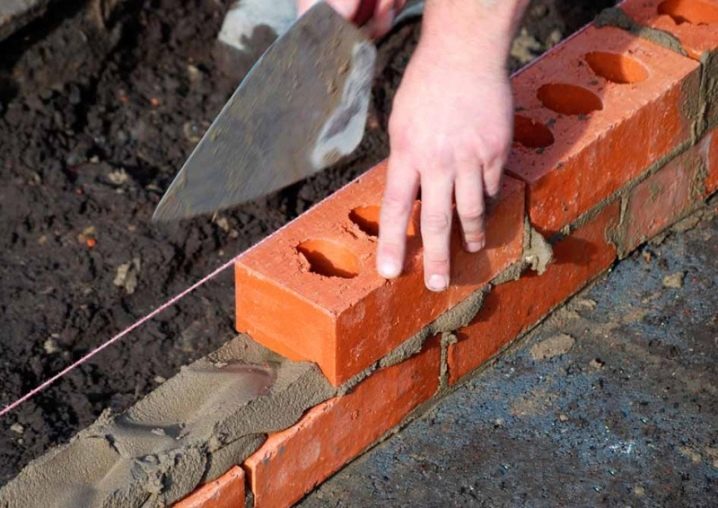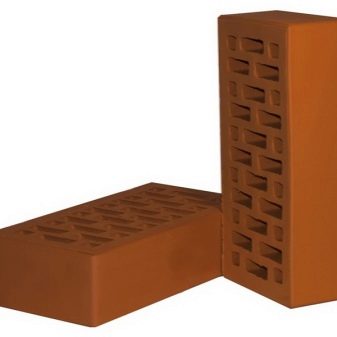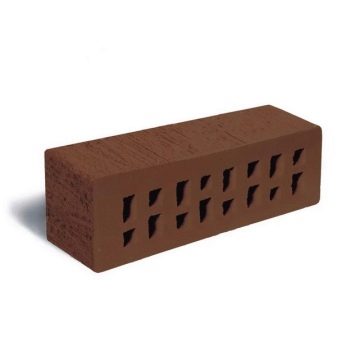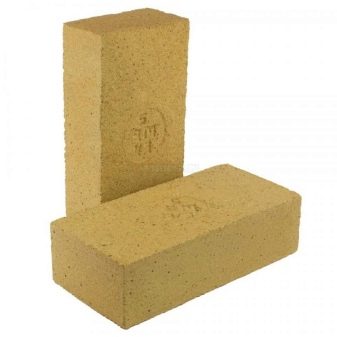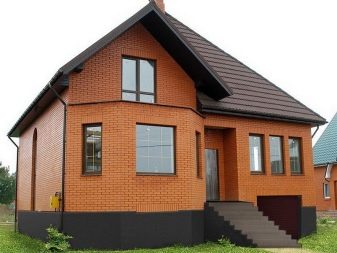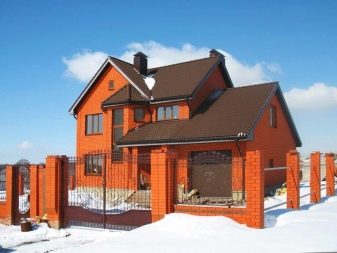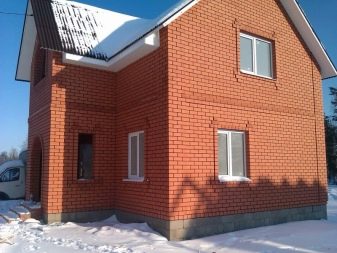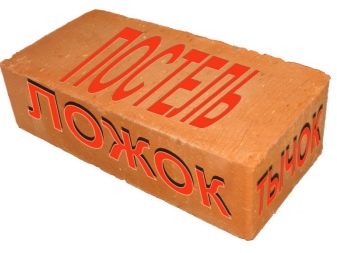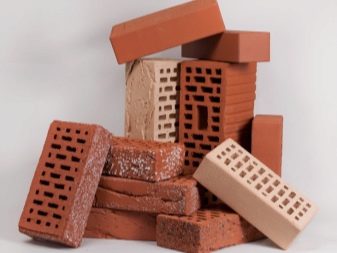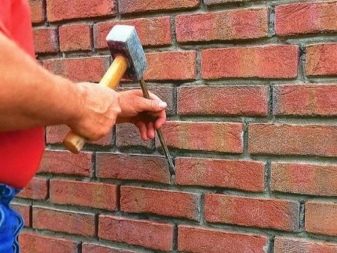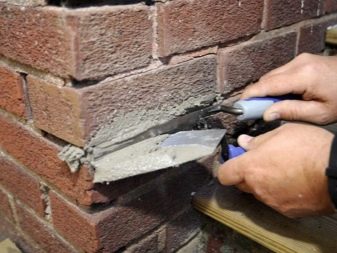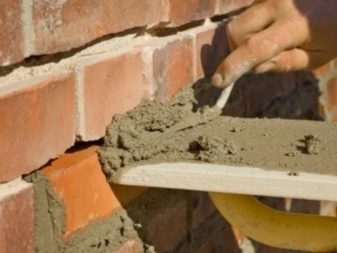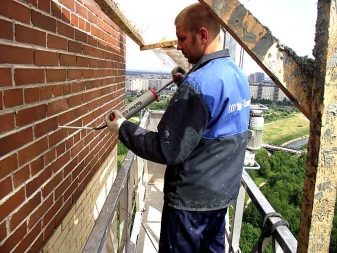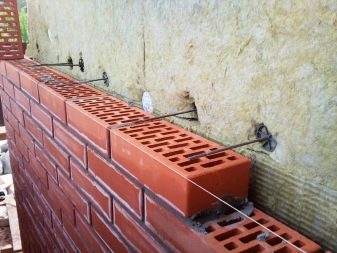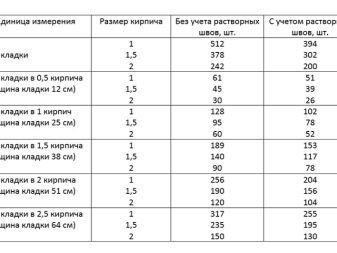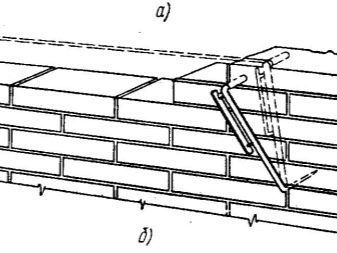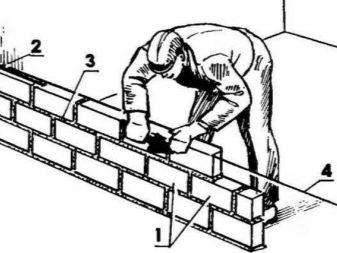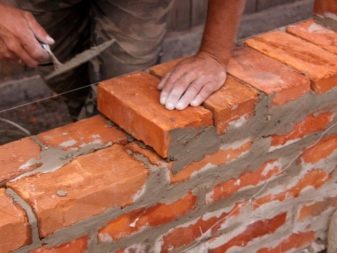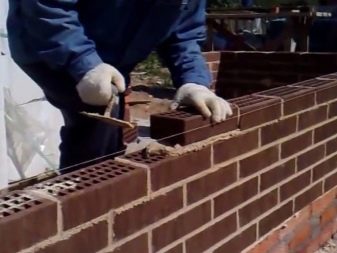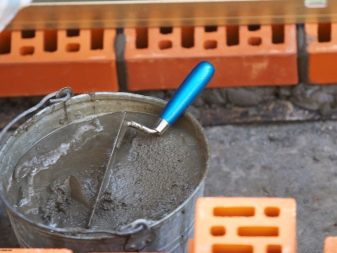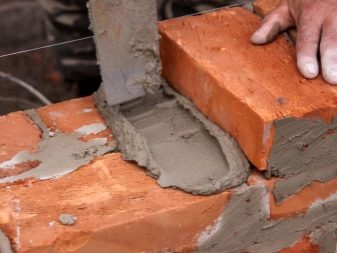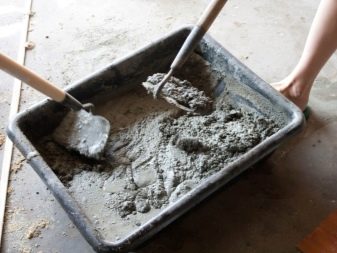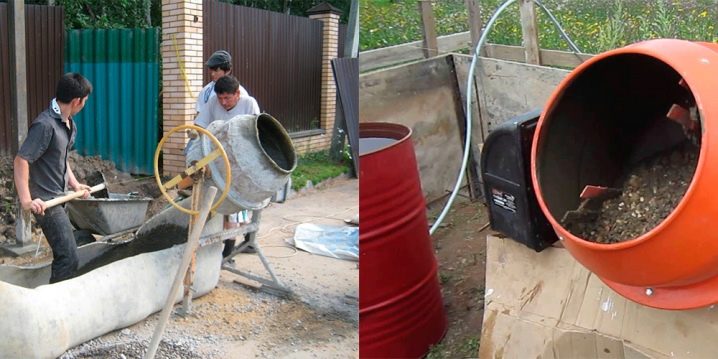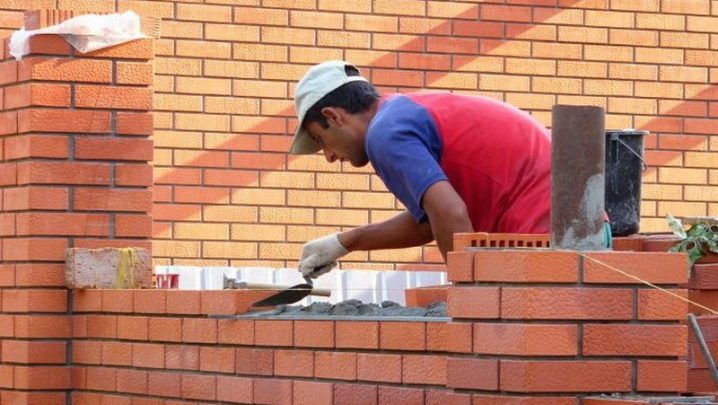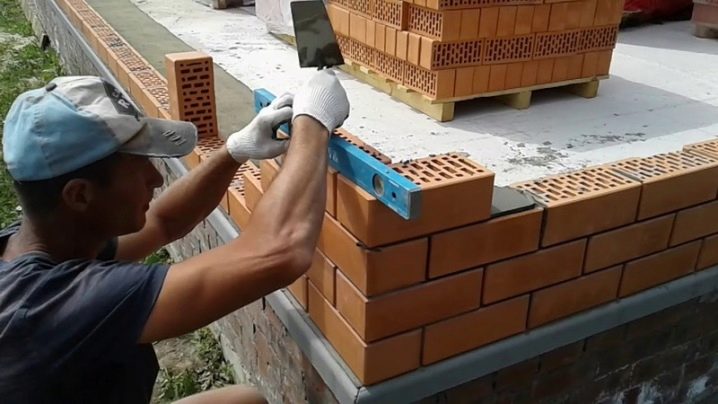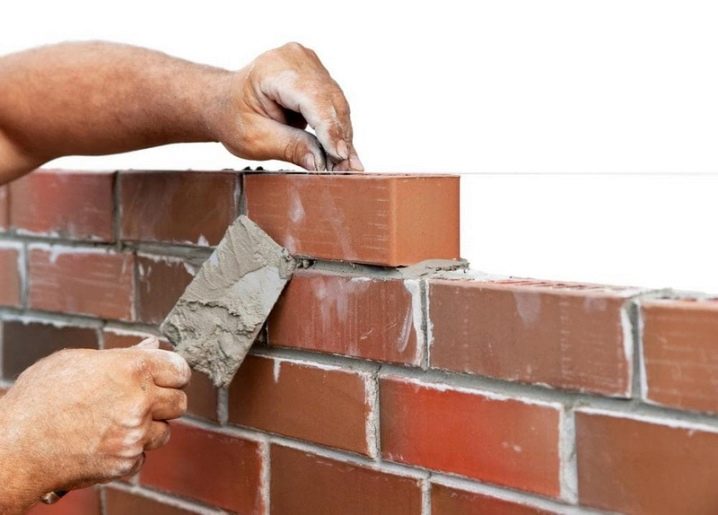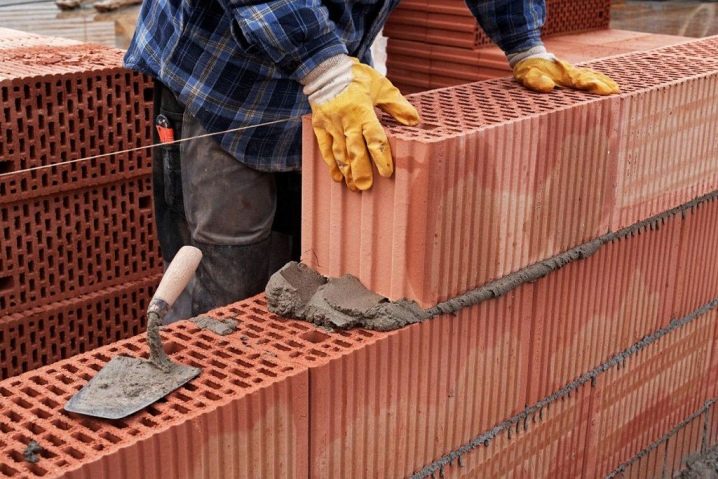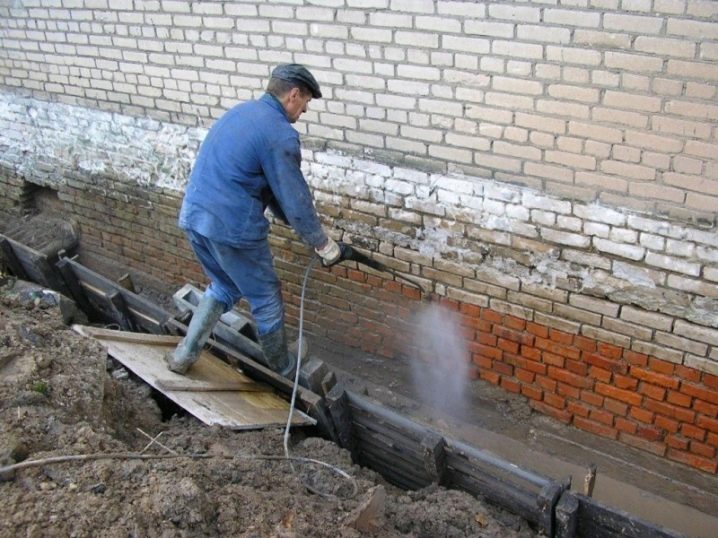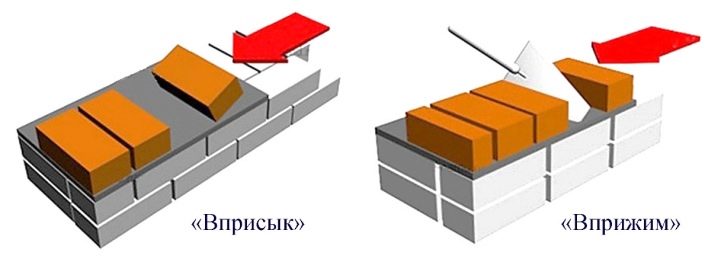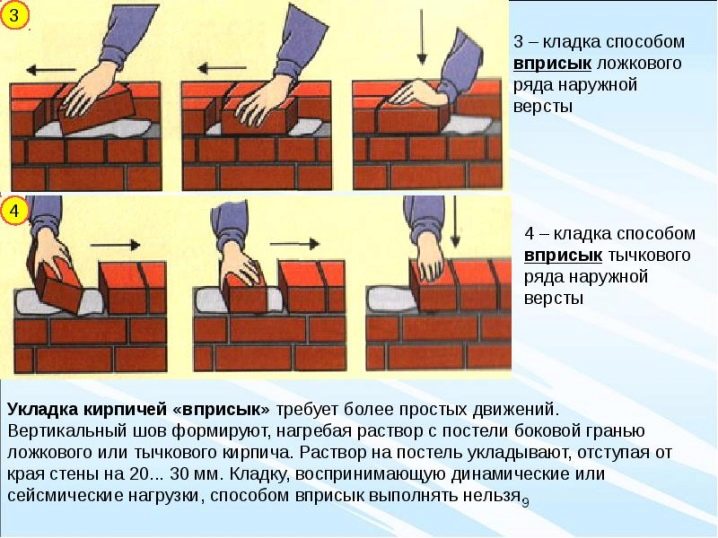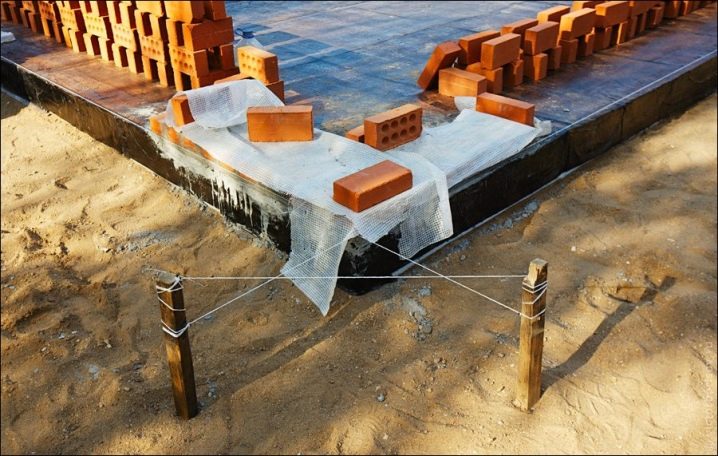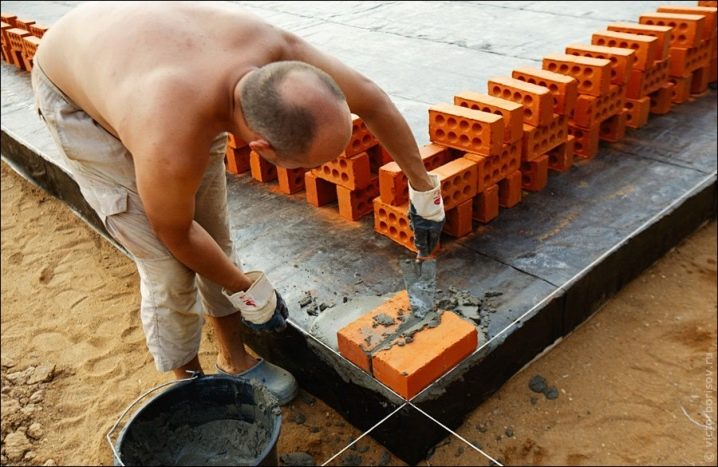Masonry walls in one brick

Laying brick is not the first century is considered responsible construction work. The laying method in 1 brick is available to non-professionals. By speed, experienced masons, of course, do not win, but their own accuracy is free. Here, as in other construction cases, the old rule “the case of the master is afraid” is relevant.
Types of bricks
The quality of the brick greatly affects the properties of the building. Classic ceramic red brick is made at a temperature of 800-1000 degrees.The clinker differs from ceramic only by its higher production temperature. This gives him increased strength. Silicate brick has a greater weight, which makes it difficult to lay, as well as poor insulation and low resistance to moisture. A certain advantage is a lower price, but it is achieved due to the quality of raw materials. Fireclay brick is a refractory clay, not susceptible to destruction at high temperatures. Refractory is used for stoves and fireplaces, its working properties - rapid heating and slow cooling.
In addition to the materials used for manufacturing, bricks differ in structural features. They are corpulent and hollow. The first are not subject to freezing, prevent the penetration of moisture, are well suited for structures with large loads. Hollow brick is used where lightness and good heat conductivity are needed.
Features of single row masonry
A brick house is a set of tightly connected small parts that create a monolithic structure. Any brick has three dimensions: length, width and height.When it is said about laying in one row, it is understood that the thickness of this row is equal to the largest dimension. In the standard version of the brick is 25 centimeters. Above twenty meters the brick is not placed in one row due to the critical increase in load. In such cases, multiple layering is used.
A brick is a piece of thermally processed clay of a standard form. Each side of the product has its own name. Pastel is the largest side, the middle side is the spoon, and the smallest end part is the poke. Modern quality of production is such that before laying it is desirable to make sure how exactly the sizes of the different batches of the resulting products match. The quality of the future construction depends on it.
Brickwork in 1 brick is used for the construction of small buildings and partitions. An extremely important point regarding the future quality of construction is the geometry of the brick. The edges must strictly diverge at 90 degrees, otherwise the defects of the structure can not be avoided. To enhance the strength of the masonry vertical joints must be made with an offset. Receiving the seam offset is called a ligation.Laying a number of end face with the smallest surface of a brick is called tychkovoy. If, however, laying a brick outwards with a longer side is a spoon.
The rule of single row stacking: the first and last rows are always tychkovymi. In these cases, broken or damaged brick is never used. Chain masonry is the way in which the tychkovy and spoon rows alternate all the time. The correctness of the laying of the corners ensures the success of the other parts. During the construction of the building, first two corners are made, which are connected by rows of bricks, then the turn of the third corner comes, which is also connected. The fourth corner create the finished perimeter. Walls are always built around the perimeter bypass. In no case can not build walls in turn.
For the construction of a pillar or structure with a column, 1.5-2 bricks are required. Laying in one row is applicable in the construction of the basement of the house. In this case, these are seasonal holiday cottages, bathhouses, small outbuildings. As already mentioned, single wall masonry is applicable only in the construction of low buildings.
Payment
Standard brick is a product 25 centimeters in length, 12 centimeters in width and 6.5 centimeters in height. The proportions are quite harmonious. Knowing the size of a single brick, it is easy to determine the quantitative need for its use. It is believed that if the mortar is 1.5 centimeters, at least 112 bricks will be spent for each square meter of masonry. However, a brick that has become available after production and transportation may not be ideal (with chips, etc.), plus a stacker may have not very good skills. In this case, it is appropriate to add 10-15% of the required amount of material to the calculated amount.
112 bricks per square meter turn into 123-129 pieces. The more experienced the worker, the smaller the number of additional bricks. Thus, 112 bricks per meter is a theoretical minimum, and 129 pieces is a practical maximum. Consider the simplest example of calculation. The height of the wall is 3 meters and the length of 5 meters gives an area of 15 square meters. It is known that 1 square meter of single-row masonry requires 112 standard bricks. Since fifteen square meters, the number of bricks in 1680 is required to increase by another 10-15%. As a result, no more than 1,932 bricks will be required for laying this wall.
What should be the solution?
Mortar - a fundamentally important product that ensures the reliability of the structure. It consists of only three elements: cement, sand and water, which can be mixed in various proportions. The sand must be dry and sifted. After the sand is mixed with cement and filled with water, the mixture is thoroughly mixed. Water initially takes 40-60% of the volume. The resulting mass must comply with the requirements of plasticity.
The higher the cement grade, the less volume is needed. Also cement grade determines its strength. M 200 withstands a load of 200 kilograms in a volume of one cubic centimeter, M 500 respectively 500 kilograms, etc. If the grade is lower than M 200, the solution of concrete and sand is required to be done one by one. If the concrete is stronger, the solution is made according to the principle: one part of concrete is three parts of sand, and sometimes less. Wetting bricks before laying creates a better grip.
Do not use too liquid solution. Four parts of sand are used for the bottom rows per cement part. However, when 60% of the wall will be erected, for greater structural strength, the cement concentration should increase to the following ratio: 1 part of cement to 3 parts of sand.
It is not necessary to produce too much building mix at a time, as the solution quickly loses its plastic properties. Water can not be added to it, because it does not change its qualities. It should be borne in mind that when laying a hollow brick, the mixture will need much more, because it takes up voids in the process of application. In addition, the solution itself must be more rigid.
The ambient temperature affects the stacker more than the properties of the mixture, but it is better to work still when the air is not cooled below +7 degrees Celsius. As the temperature falls below this threshold, the risks of deterioration in the properties of the solution increase. He can vykrashivatsya, which significantly reduces the quality of the laying of strength. In this case there are special additives, but they clearly lower the mood of the customer, because they will increase costs.
The rules and technology of brick laying do it yourself
As in any serious construction business, here you first need to prepare the tools. They are usually as follows: a bricklayer’s trowel, a hammer, a bright-colored building cord, usually a level, metal brackets, a plumb line, a square.The brick and mortar must be ready for use from the beginning to the end of the process. In the presence of a tank must be for the manufacture of a solution, and even better - a concrete mixer. Do not do without a few buckets for the finished solution and shovels for stirring.
Before practical work with bricks, it is necessary to identify the contours of the future structure. Naturally, the foundation should be ready for laying. In the first row it makes sense to determine the highest point of the working surface and mark it with bricks. Required to withstand the plane of laying at the highest point. For control, a cord is stretched between the corners of the future structure. Lighthouses are also used (bricks in middle positions between future angles).
Before use, the solution is thoroughly mixed. Then he laid out in a strip for a number. For the bonder method, the width of the strip is 20-22 centimeters, for laying by the spoon method - approximately two times less (8-10 centimeters). Before installing the brick mortar is leveled with a trowel. The installation of bricks is carried out from the corner. The first two bricks should be fitted to the two sides of the corner at the same time.The solution is usually leveled from the center to the edge. The brick is laid exactly, after which a smooth surface is achieved by lightly tapping. These actions must be performed on each side of the corner.
The guide cord is tensioned so that it runs along the upper edges of the bricks laid in the corners of the entire future structure. The laying goes from the corner to the center in accordance with the position of the cord. The first row must put the ends of the brick out. Further laying is carried out alternately, according to the scheme: perpendicular - in parallel. After a certain number of rows (as a rule, there are no more than six of them), a reinforcing mesh is laid.
Vertical seams in adjacent rows should not coincide, otherwise it will not only lead to cracks, but also create a risk of collapse. The construction of corners should be given special attention, since they form the basis of stability. After finishing the rowing with a trowel, the seams are smoothed, in which the solution is pressed inwards.
Professional Tips
The first step is to choose which brick will be used. Basically it can be facial or for interior masonry.The most famous classic red brick does not change its parameters for a long time. In all other cases, it is necessary to evaluate the specific dimensions of the product and the purpose of the structure. White (silicate) brick is considered the cheapest option. It does not differ from red in size, but weighs more. It is not recommended to build structures in one row above 8 meters from it due to increased loads on the structure. The number of other types of bricks must be calculated according to the consumption per square meter and compliance with the permissible load.
Before laying, a brick must be moistened with water to improve its interaction with the mortar, this is especially important in hot and dry conditions. The important point is that the laying is always carried out from inside the building, the cord is used as a guide. Getting started is from the corners of the future building. It requires maximum accuracy in combination with the use of a plumb and level. The vertical and horizontal stacking planes should be monitored constantly, and the more inexperienced the handler, the more often.
Laying always lead from the corners and continue to spread around the perimeter, under the hand, which is convenient for the handler.The corners are ahead of the wall in height, not less than four rows. After the fifth row, it becomes necessary to continuously monitor the vertical plane with a plumb line. It is used on the outside of the structure.
Ways and schemes
Laying the walls in one brick has two technical methods. The difference lies not only in the manipulations, but also in the density of the mortar used.
Seamless masonry "Vprizyk"
It is good for a more liquid mortar and structures, which are then supposed to be plastered. The solution is laid out immediately on the entire surface of the series. The applied mortar is leveled with a trowel, the brick is laid, pressing against the surface. Level the surface with mobility of bricks. The thickness of the applied solution should not be more than 2 centimeters. At the edge is a gap without a solution to two centimeters. This prevents extrusion of the solution.
Laying "Vprizhim"
It uses a thicker solution, because the plaster surface will not. After applying the solution install brick on the side. This provides side contact and vertical stitching.Here accuracy and maximum accuracy are important, because in case of an error the quality of work cannot be corrected. In the process of laying the brick is pressed against the trowel, which is then pulled out. The required joint width is ensured by pressure. In practice, horizontal seams are about 1.2 centimeters, vertical - 1.0 centimeters. In the process, you need to monitor that the thickness of the seams did not change.
The method is rather laborious, because it requires more movements. Efforts are rewarded by the fact that the masonry is more dense.
The process of laying and leveling corners
Laying corners is a qualification test. Chain ligation alternates knotted and spoon rows, and frequent testing ensures the quality of work. The main requirement is constant control of the cord, angle, removal of the planes by plumb and level. It is necessary to strictly follow the directions of the horizontal and vertical. Errors or inaccuracies in the corners are not allowed. Alignment is made with a corner brick, each row is controlled separately.
Measurements need to be done more often than the master experience. For ligation of the joints of the rows, where conditions do not allow the use of whole bricks, parts of the material are used, which must be made on site. So, we can conclude that laying in one row is available even for a beginner. The main thing - the implementation of construction rules, accuracy, good eye and accuracy. And, of course, the quality of the solution plays an important role.
How to make the correct laying in one brick, see the following video.
